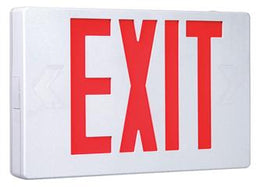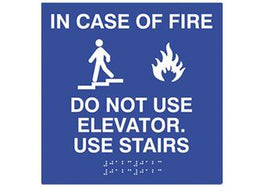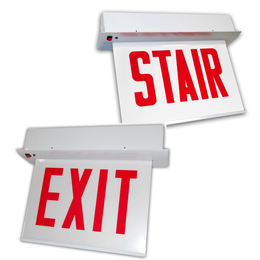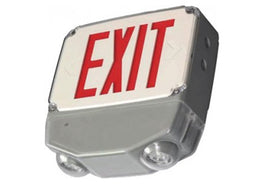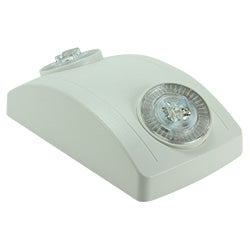Exit Signs
-

Buy American Made Exit Signs
-
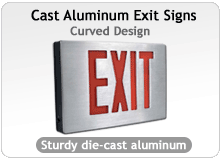
Cast Aluminum Exit Signs
-
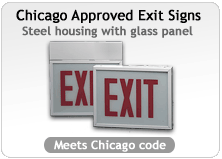
Chicago Approved Exit Signs
-
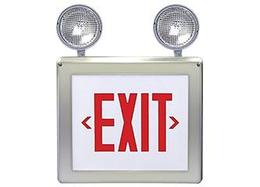
Class 1 Division 2 Exit Signs
-

Combo Exit Signs
-
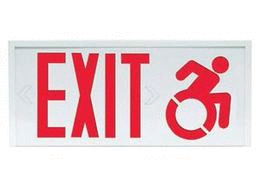
Connecticut Approved Exit Signs
-

CSA Exit Signs
-

Custom Wording Exit Signs
-
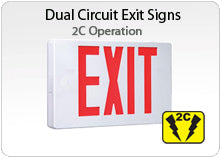
Dual Circuit Exit Signs
-

Edge Lit Exit Signs
-
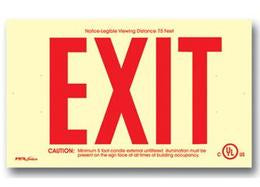
Exit Signs
-
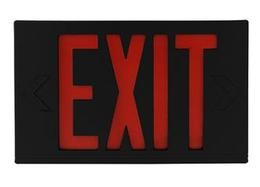
Exit Signs Black
-
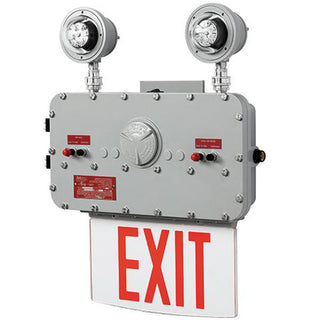
Hazardous Environment and Explosion Proof Exit Signs
-
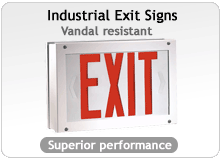
Industrial Exit Signs
-
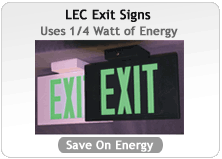
Lec Exit Signs
-
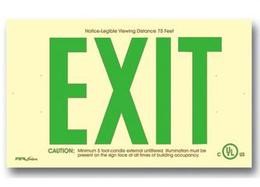
Low Level Exit Signs
-
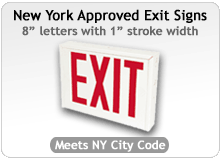
New York Approved Exit Signs
-

Pendant Kits For Exit Signs
-

Photoluminescent Exit Signs
-

Power Free Exit Signs
-
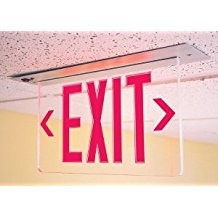
Recessed Exit Signs
-
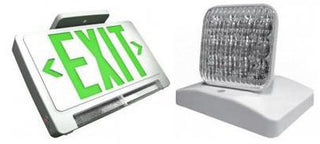
Remote Capable Exit Signs
-
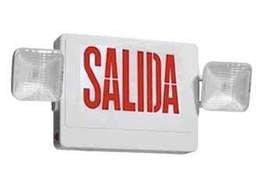
Salida Espanol Exit Signs
-
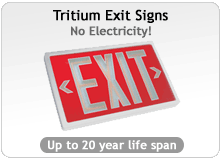
Tritium Exit Signs
-
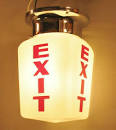
Vintage Exit Signs
-
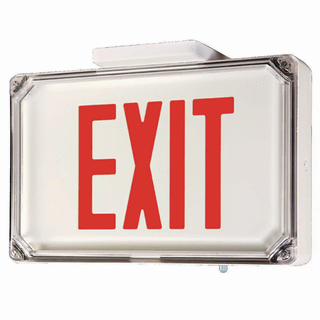
Wet Location Exit Signs
According to the National Fire Protection Association (NFPA), a fire department is called into action somewhere in the U.S. every 23 seconds. And while we’ve come a long way as far as emergency response is concerned, the U.S. Fire Administration (USFA) reported over 3700 deaths and nearly 17,000 fire-related injuries in 2019.
Such troubling statistics emphasize the need for high-quality emergency exit signs to keep building occupants safe in compliance with national, state, and local building Codes/regulations. Having the right emergency signage is not only a legal requirement, but it can be life-saving.
What is an Exit Sign?
An exit sign is a pictogram that informs building occupants and visitors of the most efficient way to evacuate the building. You’ll typically find them installed on the ceiling or wall of a building near exits. So, what is the purpose of the exit sign?
- Exit signs assist in locating the nearest and safest unobstructed path for moving from any location within the structure to a public way, open space, or refuge space.
- Exit signs help in distinguishing exit doors from non-exit doors. This could be life-saving when occupants/visitors are panicked and confused
- Exit signs must be suitably illuminated, which provides a light source in the event of an emergency
Exit Sign Code Requirements
An exit sign could mean the difference in saving a life. As such, certain emergency exit standards must be met during design or installation to facilitate the most efficient evacuation.
Several regulatory bodies govern the design, installation, and inspection of exit signs and emergency lighting. Important national Codes in the U.S. include those stipulated by NFPA 101 Life Safety Code and OSHA 1910.37(b).
P.S. It is always best to verify compliance with local government officials for state or local exit sign regulations.
Some key considerations for a compliant exit sign include:
- Exit signs must be permanent and meet visibility requirements regarding size, location, design, and distinctive color.
- Exit signs must be properly and continuously illuminated using a reliable light source.
- Always ensure the line of sight to an exit sign is always unobstructed.
- A “Not an Exit” or “No Exit” sign should be installed on doors or passageways that may be mistaken for an exit.
- Regular maintenance and inspection are required to keep exit signs in good working condition.
Failure to comply with safety signage regulations may attract hefty fines. But the ultimate cost of non-compliance is a potential risk of avoidable death, something no one should ever gamble with.
Types of Exit Signs
While exit signs often spot the same design or look, they come in different materials and illumination mechanisms. So, what are the different types of exit signs?
Broadly speaking, there are two types of exit signs: Hardwired exit signs and those that don’t need to be hardwired.
Exit Signs with Battery Backup
Exit sign Code requirements demand continuous illumination. One way to achieve this is by hardwiring the exit sign to the building’s main electrical grid.
And in the case of a power outage, there should be a rechargeable backup battery to power the exit sign for at least 90 minutes. But as with any other battery, exit sign backup batteries deteriorate with time, and you may need to replace the unit.
Some types of exit signs under this category include:
- LEC Exit Signs
- Thermoplastic LED Exit Signs
- Edgelit LED Exit Signs
- Combo Exit Signs
In other cases, you can have a hardwired exit sign that is not connected to a backup battery. Instead, it runs on 2 input power sources (Dual Circuit): The primary power source (main power rig) and an auxiliary power source (inverters, generators, etc.).
Exit Signs Not Required to be Hard Wired
Other types of exit signs don’t need to be hardwired to a building’s electricity. These are also known as “wireless” or “power-free” exit signs because they draw their illumination capabilities from other sources. They include:
Exit Sign Arrows
Suppose the path/direction of travel is not obvious. In that case, it’s recommended to use exit sign arrows to mark the path of egress. For example:
- Exit Signs with Right or Left Arrows: They basically tell you to progress to the right or left in an emergency exit.
- Signs with Up Arrows: The “Up” arrow is usually found on egress signs designated to inform occupants or visitors to climb stairs. They can also be designated for the final exit as long as there is no ramp or step-down outside.
- Signs with Down Arrows: These egress signs advise you to continue on your path or down a set of stairs. Similar to the “Up” arrow, “Down” arrows can be designated for the final exit as long as there is no ramp or step-down outside.
Note* - Today most exit signs have arrows that pop in and out so the end user can configure them accordingly.
FAQs:
Who Needs Exit Signs?
Most commercial, industrial, government, corporate, and business buildings need exit signs. Whether you’re undertaking a new construction project or renovation, it’s best to consult a local expert or government officials to ensure you’re compliant.
What Color is an Exit Sign?
Exit signs are usually either green or red. But OSHA and NFPA don’t explicitly recommend one color over the other. More focus is placed on contrast and brightness. However, local Code may require a specific color, so always check with your local fire marshall or government officials.
Where to Install Exit Signs
Exit signs should be installed near any pathway or door that leads to a building’s exit—keeping national and local regulations in mind for mounting/installation requirements.
Must my Exit Signs be Inspected?
Yes, it’s vital for exit signs and other emergency signage to be inspected regularly by a certified professional to ensure they’re in good working condition.
Do Exit Signs Need to be Illuminated?
To quote OSHA requirements, “Each exit sign must be illuminated to a surface value of at least five foot-candles (54 lux) by a reliable light source and be distinctive in color. Self-luminous or electroluminescent signs that have a minimum luminance surface value of at least .06 footlamberts (0.21 cd/m2) are permitted.”
For More information or to purchase code complaint Exit Signs call us at (888) 953-3948



